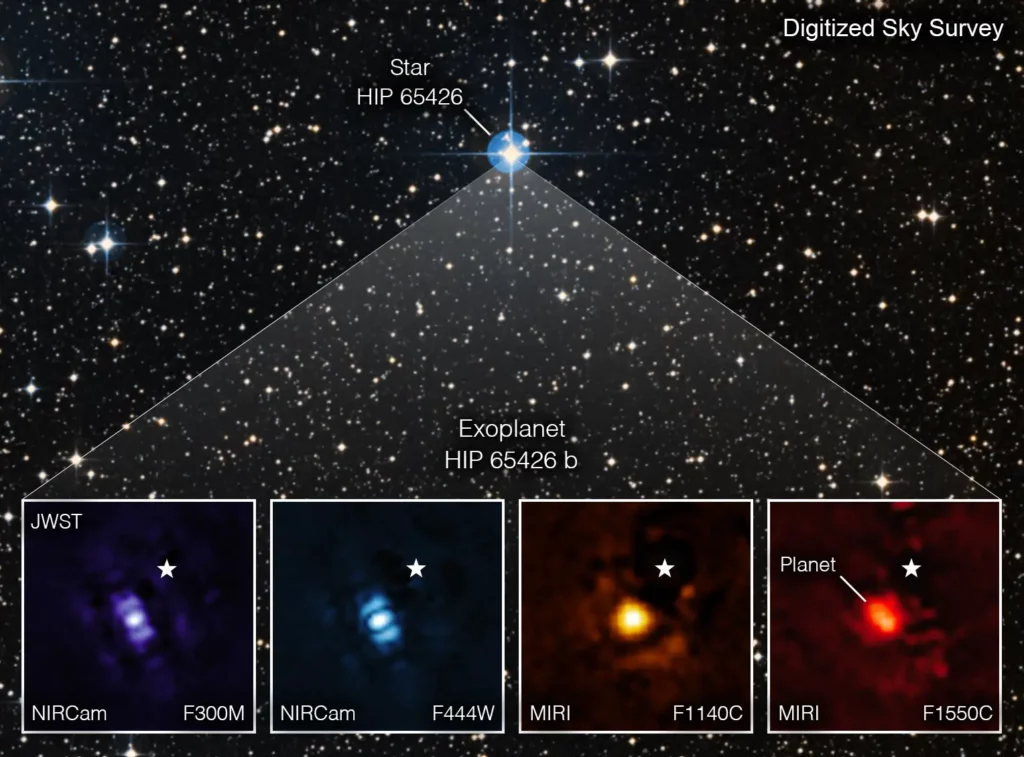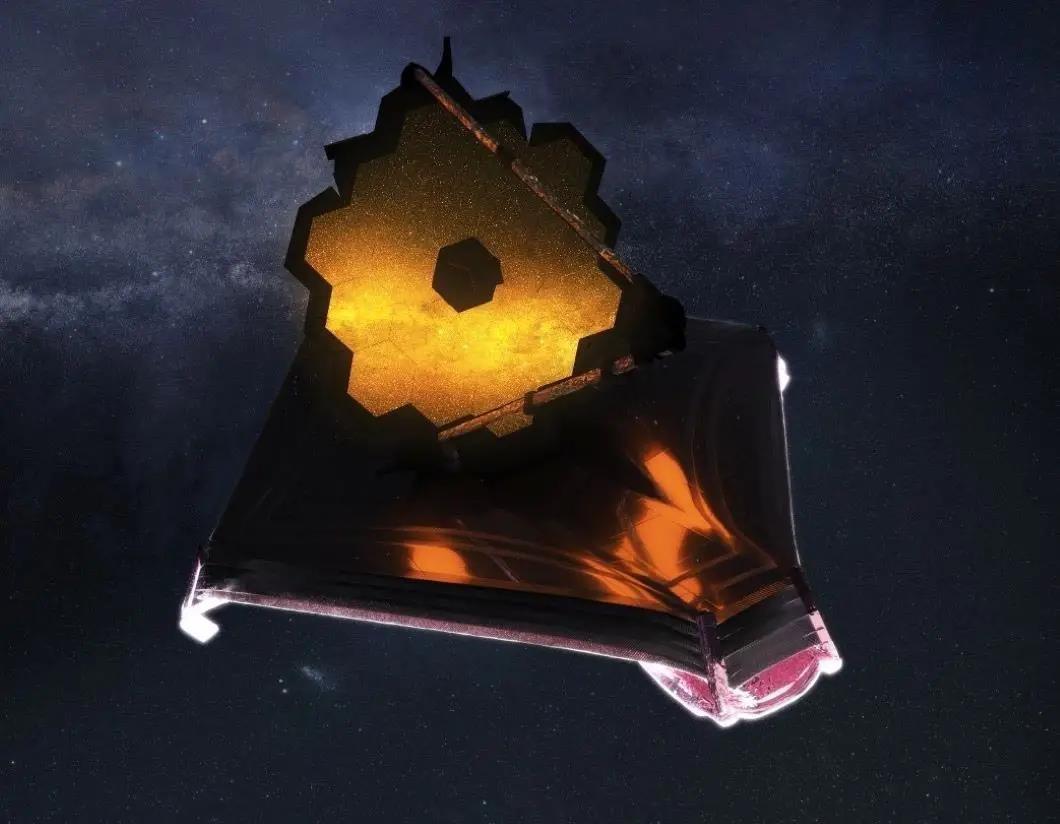The James Webb Space Telescope’s goal is to study exoplanets. NASA got Christopher Stark, a scientist from the NASA Goddard Space Flight Center, to explain how they use this telescope to learn about far-away planets.
NASA’s James Webb Space Telescope has special ways of studying planets around other stars, also known as exoplanets. One of these methods is that Webb can detect some of these planets directly. This is really hard because even our closest stars are far away. Their planets appear so small that they almost look like small pieces of hair when seen from arm’s length. Seeing them clearly with the telescope can be tricky since the light from their star makes it difficult to see its planet properly.
Fortunately, Webb has the stuff needed to get the job done. It’s called the Near-Infrared Camera (NIRCam) and Mid-Infrared Instrument (MIRI). Basically, these work like a visor in our car. They block out the bright light from stars so we can actually see a planet’s dimmer light. It’s just like when you use your car visor when it’s either sunrise or sunset – but Webb uses special tech that works even better!
When light passes through Webb’s optical equipment, it passes through some special locations called “planes”. For example, the ‘image plane’ is where all the distant objects in space become visible and sharp. Likewise, the ‘pupil plane’ shows us a clear image of Webb’s primary mirror. In order to maximize its performance, Webb has special masks that block out unwanted starlight in both planes. Most of these masks (patterns which look like spots or bars) simply block out light in the image directly. But MIRI’s have something different: A type of mask called a “four-quadrant phase mask” which uses a process called destructive interference to make starlight not appear as bright.
Light waves have the ability to sneak past the image masks that block stars. So Webb uses Lyot stops, or pupil plane masks, to take away most of the starlight. The telescope “pupil” looks different from these pupil plane masks, resulting in objects that don’t show the six-spiked web pattern seen in the observations.

James Webb Space Telescope’s NIRCam instrument has five special masks that can look at different wavelengths from 1.7 to 5 microns, while its MIRI instrument has four such masks working with a set of wavelengths ranging between 10 and 23 microns. These ‘coronagraphs’ are equipped to observe things located as close as 0.13 arcseconds away from a star and up to 30 arcseconds in distance; this range is equivalent to the distances between a few ‘Astronomical Units’ (AUs) to hundreds of AUs around the nearest stars. An Astronomical Unit is approximately equal to the space between Earth and Sun.
Webb’s astronomers need to use a special type of technique called ‘point spread function (PSF) subtraction methods’ in order to remove any remaining light from the stars that their masks don’t take care of. Basically, this just means taking note of where the starlight is still lingering and then subtracting it from the science image. After this process, all you will see is some noisy patterns which determine how faint an exoplanet can be detected by Webb. This limit is known as ‘contrast’ and it compares the brightness between an exoplanet and its star. During its testing phase, Webb successfully demonstrated contrasts better than one in ten thousand (10-5) or one in ten thousand (10-4) at 1 arcsecond separation with its NIRCam and MIRI coronagraphs respectively.
NASA’s Webb Telescope has a large mirror and infrared features that make it perfect for examining faint objects in the infrared light, as well as objects seen by other kinds of telescopes. Astronomers will use its coronagraphs, which are like cameras, to spy out exoplanets – planets outside our solar system. We’ll also get to see the dense discs made up of asteroids and comets flying around those exoplanetary systems, plus protoplanetary disks created when new planets form. Finally, we can even use Webb to study bright galaxies that contain active galactic nuclei.
Webb’s telescopes can’t show us every detail about planets outside our system. To be able to see planets like ours around similar stars, like the Sun, we need to look more closely at the star and observe planets that are one ten billionth as bright. To do this, we’ll need a special mission designed just for this purpose. Luckily, NASA is on it! The Nancy Grace Roman Space Telescope they plan to launch will have an instrument to test future telescope technology. Plus, NASA is planning out another mission called the Habitable Worlds Observatory that’ll be as big as Webb and use wavelengths like Hubble but it’s main focus will be searching for Earth-like exoplanets and looking for any signs of life.


